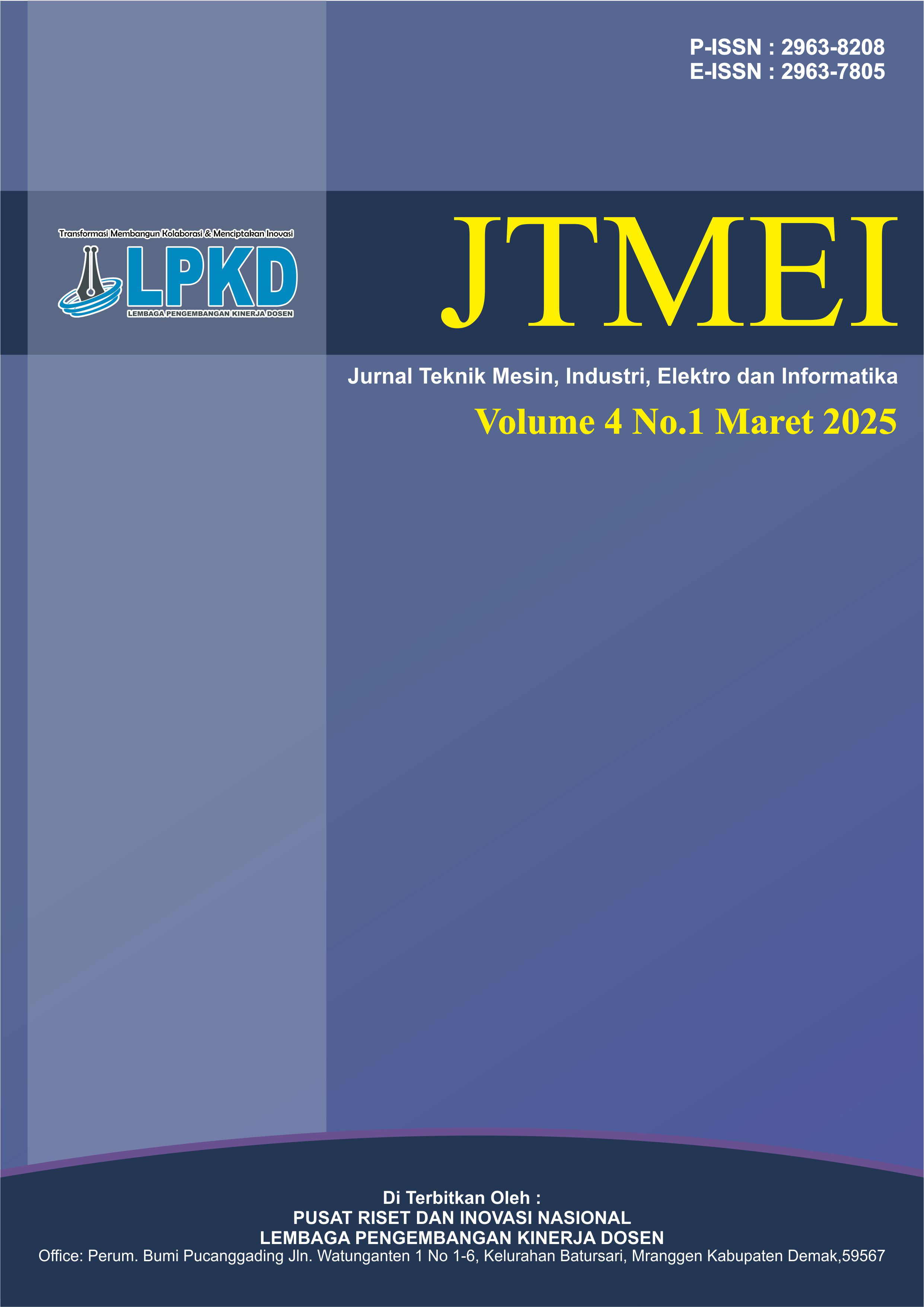Pengaruh Tegangan Terhadap Besar Kuat Arus Listrik Pada Pengukuran Hukum OHM Berbasis Simulasi Phet HTML5
DOI:
https://doi.org/10.55606/jtmei.v4i1.4843Keywords:
Current, Ohm’s Law, PHET simulation, Voltage, ResistorAbstract
This study examines the effect of voltage on the current in an electrical circuit based on Ohm's Law using a PHET simulation. The objective of this research is to understand the relationship between voltage and current when applied to circuits with fixed resistors. The experiment was conducted using PHET simulation software, where voltage was varied from 1 to 9 volts, and current was measured across two resistors with values of 1kΩ and 500Ω. The results show a linear increase in current with increasing voltage, confirming Ohm's Law, where current is directly proportional to voltage and inversely proportional to resistance. The findings imply that simulations can effectively illustrate fundamental electrical principles, offering a practical learning tool for understanding circuit behavior. The study highlights the potential of virtual labs in providing interactive and engaging experiences for students and suggests further research in real-world settings to verify these findings.
Downloads
References
Anantama, A., Apriyantina, A., Samsugi, S., & Rossi, F. (2020). Alat pantau jumlah pemakaian daya listrik pada alat elektronik berbasis Arduino UNO. Jurnal Teknologi Dan Sistem Tertanam, 1(1), 29–34.
Arpin, R. M. (2020). Skematik rangkaian penyearah setengah gelombang pada rangkaian elektronika analog. Dewantara Journal of Technology, 1(1), 22–24.
Dirgantara, B. L. (2022). Sistem pengukuran rangkaian hukum Ohm berbasis simulasi HTML5. Teknologipintar.org, 2(2). http://jurnal.teknokrat.ac.id/index.php/A
Eleo, M. C., & Manguilimotan, Y. B. (2024). PHYSICS EDUCATION TECHNOLOGY (PhET) interactive simulations as teaching aid in enhancing students' performance in physics. EPRA International Journal of Multidisciplinary Research (IJMR). https://doi.org/10.36713/epra15991
Genaldo, R., Septyawan, T., Surahman, A., & Prasetyawan, P. (2020). Sistem keamanan pada ruangan pribadi menggunakan mikrokontroler Arduino dan SMS gateway. Jurnal Teknik Dan Sistem Komputer, 1(2), 13–19.
Harahap, A., Sucipto, A., & Jupriyadi, J. (2020). Pemanfaatan augmented reality (AR) pada media pembelajaran pengenalan komponen elektronika berbasis Android. Jurnal Ilmiah Infrastruktur Teknologi Informasi, 1(1), 20–25. http://jurnal.teknokrat.ac.id/index.php/A
Liswar, F., Hidayati, A., Rayendra, R., & Yeni, F. (2023). The use of PhET interactive simulation software in physics learning. Jurnal Penelitian Pendidikan IPA, 9(Special Issue), 135–142. https://doi.org/10.29303/jppipa.v9iSpecialIssue.5982
Luzyawati, L., Hamidah, I., Fauzan, A., & Husamah. (2025). Higher-order thinking skills-based science literacy questions for high school students. Journal of Education and Learning (EduLearn), 19(1), 134–142. https://doi.org/10.11591/edulearn.v19i1.21508
Svoboda, J. A., & Dorf, R. C. (2014). Introduction to electric circuits (9th ed.). John Wiley & Sons.
Yasu, R. M., & Hadi, C. F. (2021). Pengaruh tegangan terhadap besar kuat arus listrik pada persamaan hukum Ohm. Zetroem, 3(1).
Downloads
Published
How to Cite
Issue
Section
License
Copyright (c) 2025 Jurnal Teknik Mesin, Industri, Elektro dan Informatika

This work is licensed under a Creative Commons Attribution-ShareAlike 4.0 International License.








